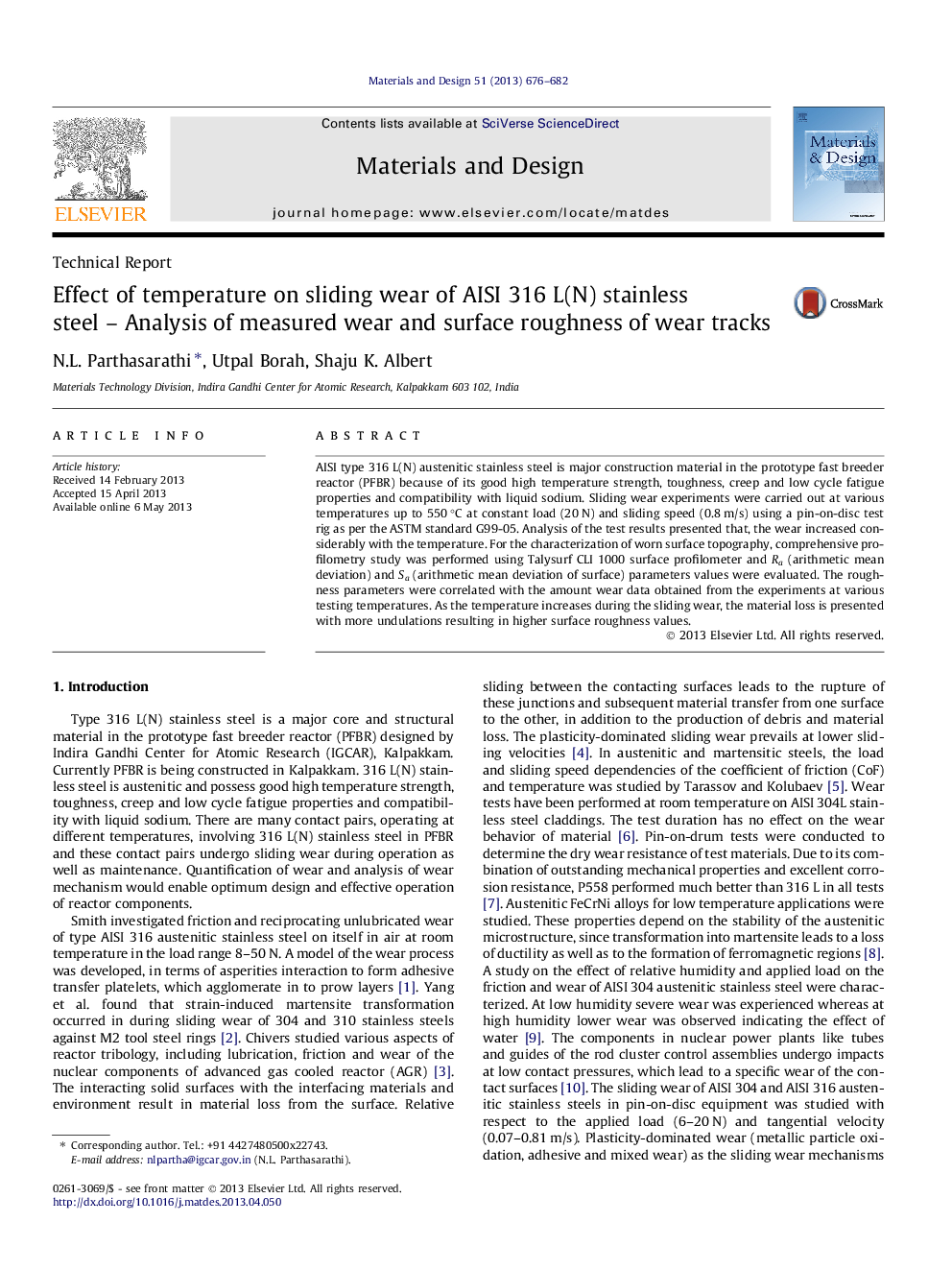| Article ID | Journal | Published Year | Pages | File Type |
|---|---|---|---|---|
| 829887 | Materials & Design (1980-2015) | 2013 | 7 Pages |
•The characterization of worn surface topography, comprehensive profilometry study was performed using Talysurf CLI 1000 surface profilometer.•The roughness parameters were correlated with the amount wear data obtained from the experiments at various testing temperatures.•Elevated temperature promoted higher wear rate.•Frictional forces increase with increasing temperature thereby resulting in more material loss by wear.•The wear tracks widened with increase in temperature.
AISI type 316 L(N) austenitic stainless steel is major construction material in the prototype fast breeder reactor (PFBR) because of its good high temperature strength, toughness, creep and low cycle fatigue properties and compatibility with liquid sodium. Sliding wear experiments were carried out at various temperatures up to 550 °C at constant load (20 N) and sliding speed (0.8 m/s) using a pin-on-disc test rig as per the ASTM standard G99-05. Analysis of the test results presented that, the wear increased considerably with the temperature. For the characterization of worn surface topography, comprehensive profilometry study was performed using Talysurf CLI 1000 surface profilometer and Ra (arithmetic mean deviation) and Sa (arithmetic mean deviation of surface) parameters values were evaluated. The roughness parameters were correlated with the amount wear data obtained from the experiments at various testing temperatures. As the temperature increases during the sliding wear, the material loss is presented with more undulations resulting in higher surface roughness values.
Graphical abstractThe wear tests were conducted at room temperatures (25 °C), 100 °C, 150 °C, 250 °C, 350 °C, 450 °C and 550 °C for a constant load of 20 N and at constant sliding velocity of 0.8 m/sec. The following conclusions can be drawn from this study: • Elevated temperature promoted higher wear rate. Frictional forces increase with increasing temperature thereby resulting in more material loss by wear (Figs. 1 and 2). The wear tracks widened with increase in temperature. The three dimensional surface profiles of the wear tracks corroborated the wear data measured during the sliding wear tests on AISI 316 L(N) stainless steel at various temperatures. • Presence of built up edges in the surface profiles and increase in the surface roughness depicted by arithmetic mean deviation of the surface (Sa) values with increase in temperature confirmed that major wear mechanism in dry sliding wear of AISI 316 L(N) stainless steel is adhesive wear.Figure optionsDownload full-size imageDownload as PowerPoint slide
